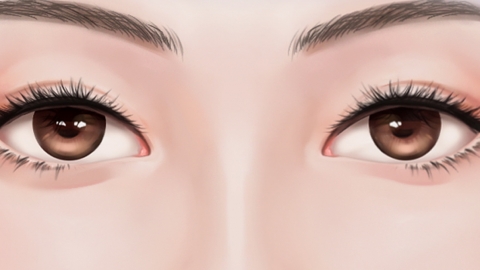What causes the appearance of floating dark shadows in the eyes?
In general, the appearance of floating dark spots in the eyes may be caused by vitreous opacity, eye fatigue, posterior uveitis, periphlebitis retinae, diabetic retinopathy, and other conditions. Prompt medical attention is required, and treatment should be administered according to medical advice. Details are as follows:

1. Vitreous opacity: The vitreous body is a transparent, gel-like structure within the eyeball. It may gradually liquefy or undergo degeneration, leading to the formation of opaque materials, thereby causing vitreous opacity. This can obstruct light entering the eye and cast shadows on the retina, resulting in floating dark spots in the visual field. Maintaining healthy lifestyle habits, such as balanced nutrition and avoiding excessive eye strain, may help alleviate symptoms.
2. Eye fatigue: Prolonged use of the eyes, such as staring at electronic devices like computers and mobile phones for extended periods, may cause eye fatigue. Eye fatigue can lead to tension in the eye muscles, which affects visual quality and may result in the sensation of floating dark spots. Reducing screen time and taking breaks by looking into the distance or closing the eyes periodically can help relieve symptoms.
3. Posterior uveitis: Posterior uveitis is an ocular inflammation caused by pathogenic infections, immune system disorders, trauma, genetic factors, and other causes. When inflammation leads to vitreous opacity, floating dark spots may appear in the visual field, often accompanied by eye pain. Anti-inflammatory treatment should follow medical advice, using medications such as Cefradine Capsules, Tobramycin Dexamethasone Eye Drops, Levofloxacin Eye Drops, and others.
4. Periphlebitis retinae: Periphlebitis retinae may be associated with systemic tuberculosis infection, immune or genetic factors. This condition can cause inflammatory reactions around retinal veins, thereby affecting retinal blood circulation and normal function, leading to floating dark spots in the vision, and may also be accompanied by blurred vision. Under medical guidance, medications such as Prednisone Tablets, Compound Danshen Dropping Pills, and Tranexamic Acid Capsules may be used for anti-inflammatory, vasodilatory, and antifibrinolytic treatments.
5. Diabetic retinopathy: Diabetic retinopathy is a common complication of diabetes. Long-term hyperglycemia can damage the retinal blood vessels and nerve tissues, leading to retinal hemorrhage, exudation, and other pathological changes. These changes can impair normal retinal function, causing floating dark spots and possibly accompanied by vision loss. Medications such as Acarbose Capsules, Glimepiride Tablets, Gliquidone Tablets, and others should be used according to medical advice to help control blood sugar levels.
During treatment, maintaining healthy lifestyle and dietary habits is important to promote ocular health and recovery.
References:
1. Zhao Kanxing, Yang Peizeng. Ophthalmology [M]. 9th Edition. Beijing: People's Medical Publishing House, 2018.
2. Li Fengming. Chinese Ophthalmology [M]. 3rd Edition. Beijing: People's Medical Publishing House, 2018.










